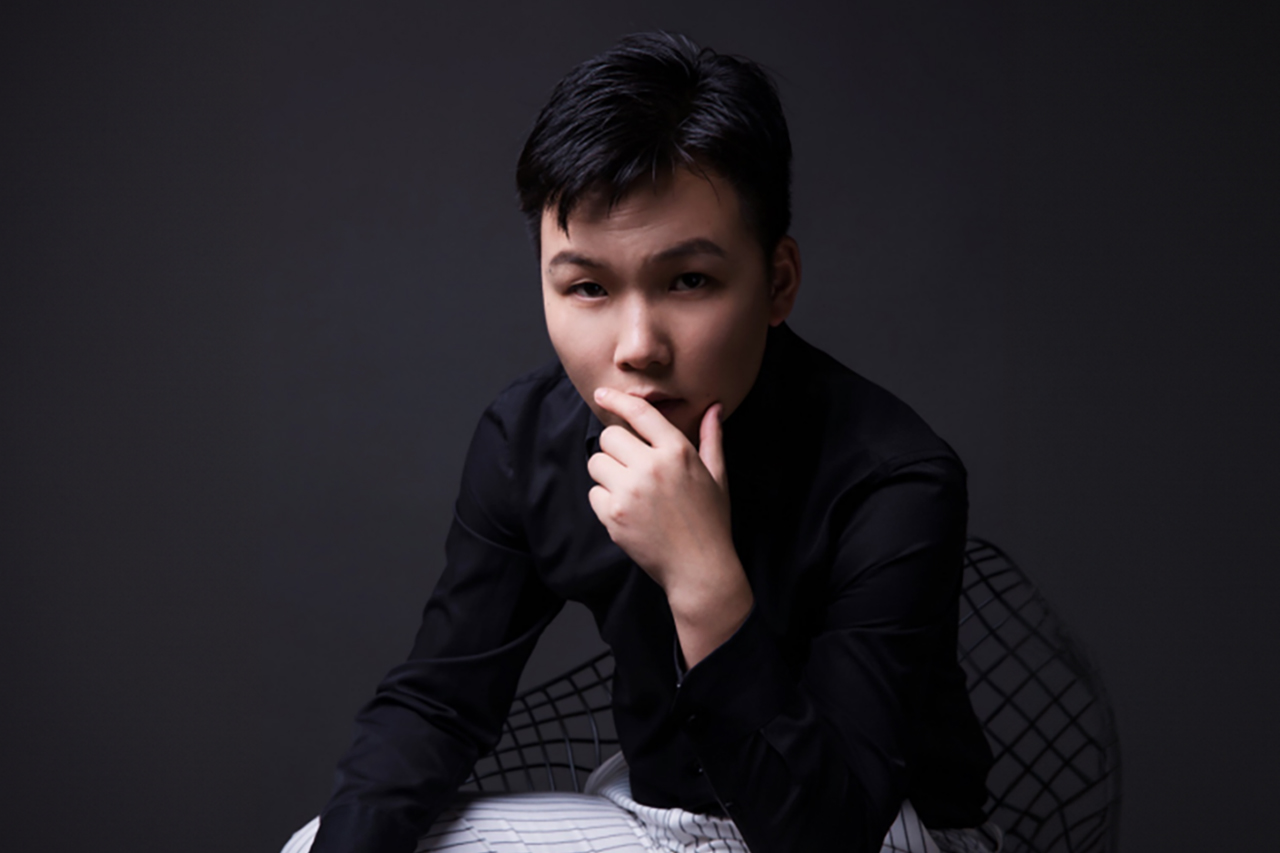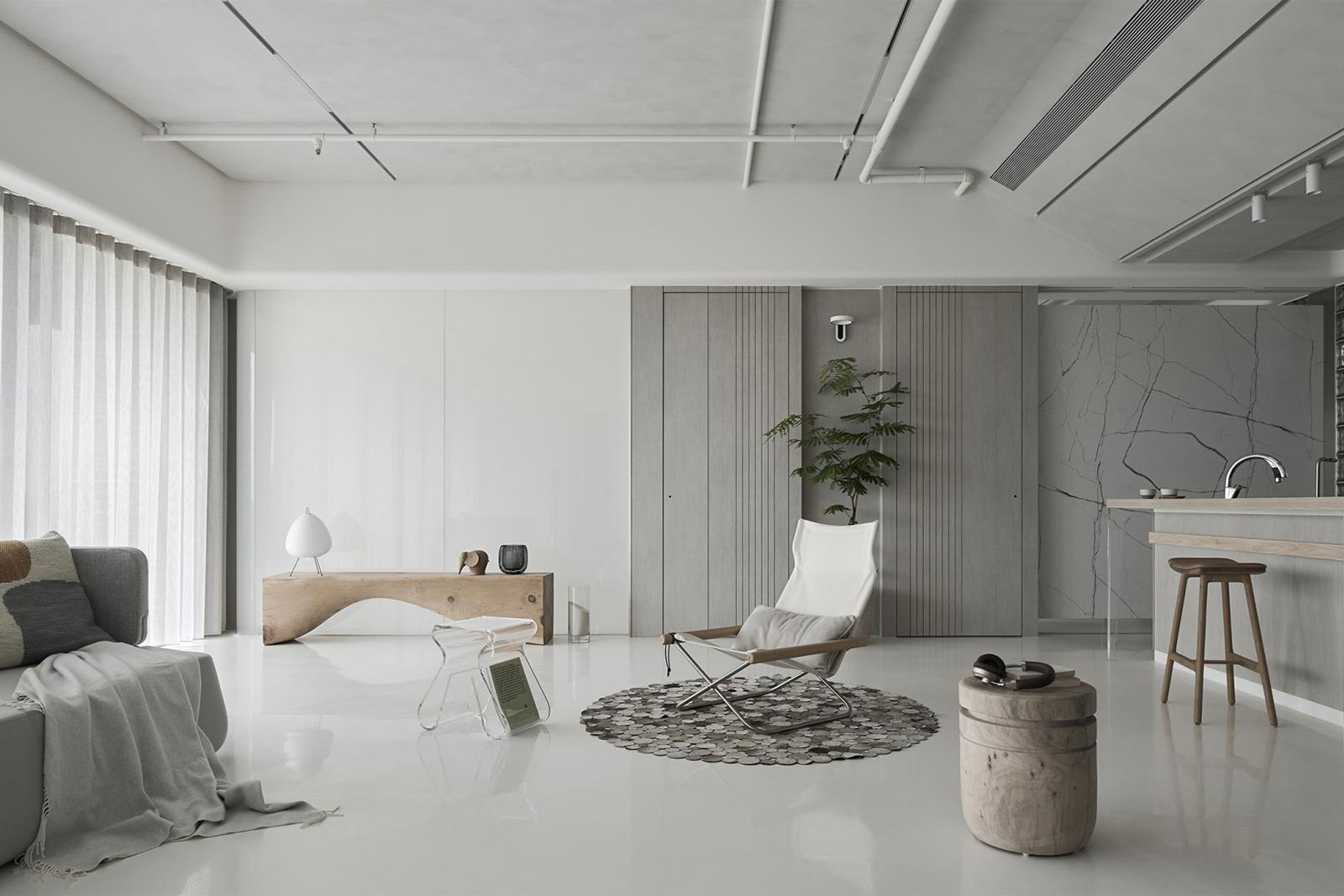Interview with Lu Yinping of YP Design

Interview with Anna Aldighieri | Photographing Motions of Moments in Everyday Life
June 25, 2024
Interview with Jason Shih | An Award-Winning Metal Sculptor from Good Art Co. Ltd.
June 25, 2024Lu Yinping
Lu Yinping, the founder of YP Design, leads a firm focused on interior design, specializing in creating innovative and aesthetically pleasing spaces. He has been passionately practicing interior design for 18 years, since graduating from college in 2006, continuously honing his skills and evolving his creative approach.
"Design" for me, it is my love since I was a teenager, and it is the core of my work at the moment. In the long run, it may be a way for me to realize the value of my life and the value of the society. In terms of life value, I can let people recognize me through design.
It is impossible for people to live forever, but my design works may still be there after a hundred years, and these will be the proof that I have come to this world. In terms of social value, I hope that through my design projects can bring help to the people in need.
I once took over a project for a home for the elderly, the audience group of this project is a group of elderly people, I will give full consideration to the needs of the elderly in my design, consider a more convenient and more practical humanized design, so that they can feel comfortable and convenient in this space, and feel the special care and attention to the elderly.
I usually start with communication, I will communicate with my clients many times to understand the real needs of the space users, get as much information as possible, then disassemble and categorize, divide the space, the functional needs to determine the layout of the space, and I usually use hand-drawing to do this step.
Next, I will have a brainstorming session with my partners, so that we can discuss and brainstorm together, combine different ideas and thoughts, find a main line of design direction, and then proceed to the next design work. Once the design direction is established, it is time for the three-dimensional representation. I will first conceptualize a preliminary conceptual model, and then proceed to the detailed drawing, and finally form the design work.
Of course, there are. On the one hand, Chinese traditional culture can provide me with colorful visual elements and design concepts that can be skillfully used in my designs. On the other hand, Chinese traditional culture can provide historical background and cultural connotation for my creations, so that the designs have profound cultural meaning and connotation.
Overall, Chinese traditional culture has a great influence on me. Chinese traditional culture is a historical culture with national characteristics and unique style that has been changed and formed through the times; design is an activity of envisioning, planning, planning, budgeting, etc., which is a creative activity carried out by human beings in order to achieve a certain specific purpose; traditional culture is a starting point and a source of modern art and design, and the integration of both of them can bring new opportunities.
I chose this project to participate in the MUSE Design Awards, first of all, because I understood the conditions and requirements in advance, and the work I chose first of all meets the conditions.
Secondly, I personally believe that the client of this project and his family is a typical type of family in China, a three-generation family, which is very representative of the family structure. In our country, there are often three generations living in a large space, and it is very difficult for many designers to satisfy the functional and emotional needs of the three different age groups, which is what many designers in China encounter in the design of domestic decoration space nowadays.
This project reflects my different design ideas in different spaces, not only to give a space to meet the three generations can be together, but also to focus on the design of their respective private space, in the public area can enhance the interaction and connection between family members, personal area is suitable for the establishment of their own independent world, to meet their personal needs.
1. The ability to constantly challenge myself.
2. The ability to constantly learn new things that keep me learning.
3. Endless possibilities.
I believe that China's uniqueness in the design industry stems primarily from its rich cultural heritage, which spans over five thousand years. The vastness of China's landscape and its countless traditional cultures, coupled with its status as a multi-ethnic nation, contribute to a diverse and vibrant cultural tapestry.
This depth and breadth of culture provide designers with a wealth of historical background and cultural connotation, offering rich design elements that inspire creativity and innovation. Consequently, Chinese designers can produce work that is both profound and culturally significant.
Moreover, the country's advancements in science and technology have greatly influenced the design industry. Technological progress has equipped designers with efficient tools such as digitalization and big data analysis, which help in understanding user needs.
Additionally, the maturity of the domestic manufacturing industry supports the practical realization of design projects. Lastly, China's economic growth and stable, healthy social environment create a favorable setting for design creation, allowing designers to thrive and innovate.
I think the future development direction of the design industry would be the following:
Sustainable design: As the concern for global environmental issues continues to increase, sustainable design will become an important direction for design in the future. Designers will pay more attention to the use of environmentally friendly materials, reduce energy consumption, enhance the product life cycle and other aspects to reduce the damage and adverse impact on the environment.
Digital design: With the continuous improvement of technology, digitalization will be widely used in various industries in the future. Designers can use computer software, AI technology, etc., to design more conveniently and complete the design performance more efficiently.
Personalized design: The word private customization has been popular in the design industry for a long time, with the development of custom manufacturing technology, as well as the arrival of the era of big data analysis, designers can analyze the user's personal preferences and characteristics through big data, to provide more accurate design solutions.
Emotional Design: As science and technology continue to advance, people's lives will become increasingly convenient, and access to material goods will become easier. In the future, there will be a greater focus on emotional value and spiritual experiences. Designers will place more emphasis on understanding and catering to people's true emotions.
By utilizing elements such as color, lighting, materials, and ambiance, designers will create products and environments that evoke emotional resonance and interactivity. Emotional design enhances user satisfaction and fosters a deeper emotional connection, ultimately creating a more humanized and enriching design experience.
These are just a few of the trends I've observed in the future of the design industry, and the actual direction of development will be influenced by a number of social, cultural and technological factors.
I would first recommend them to learn about the major design awards at home and abroad, and what are the requirements, such as the MUSE Design Award, to measure their own level in the industry by understanding the requirements for participation, so as to motivate themselves to be more sophisticated in design.
We also recommend some design exchange forums, where we can communicate and learn from each other, and listen to different designers' understanding and views on design, which can help you develop your own thinking and vision.
Will even recommend some opportunities to study abroad, go to other countries and regions to study and research, the cultural background of different countries, the design of the breeding will be different, not as good as read a million books and travel ten thousand miles, the design of this road is not a closed-door car, it is unlimited creativity and possibilities.
Winning Entry
Doing Nothing | 2024
The name "Doing Nothing " is from the wisdom of life inspired by discussions between the designer and the client. …
(Read more at MUSE Design Awards)
Lu Yinping
Lu Yinping, the founder of YP Design, leads a firm focused on interior design, specializing in creating innovative and aesthetically pleasing spaces. He has been passionately practicing interior design for 18 years, since graduating from college in 2006, continuously honing his skills and evolving his creative approach.
Read more about this interview TA Design Studio, the Silver Winners of the 2024 MUSE Design Awards.


